Garden Glimpses: June 2021
June can be a slow month in the garden, visually; the spring bulbs and ephemerals are long past, seeds have barely sprouted, bedded annuals are still teeny things just starting to grow, and summer perennials have yet to open. But as the month progresses to the solstice, pops of color begin to emerge.
But first, a bit of unfinished business from spring. The last of the bulbs were up and doing by mid-May, and I was very happy with the show they provided. My hyacinthoides hispanica, Spanish Bluebells by another name, bloomed vigorously but not that long, accelerated by an early heat wave which rushed their blossoms into a premature fade. Like the early spring muscari bluebells, these aren’t just blue, but also come in white and pink varieties, and resemble a somewhat sparse hybrid hyacinth. Very charming, and crucial in filling the floral gap between spring and summer bounty.
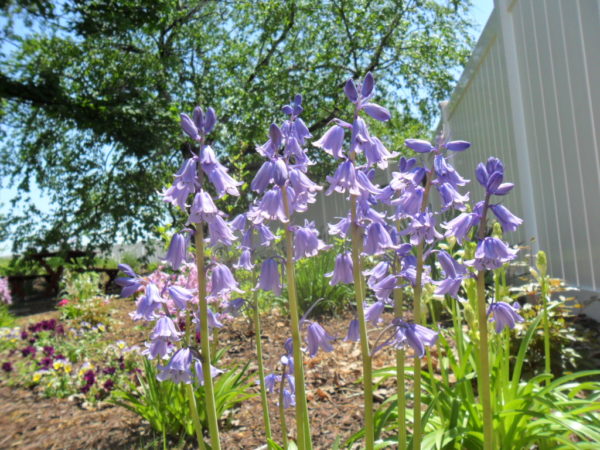

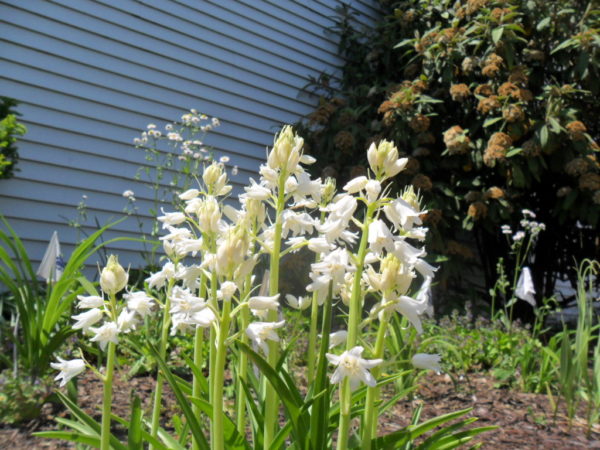
Perhaps one of the oddest performers was Alpine Rosy Bells, a new plant for me. One of the earliest to emerge, it’s the last to bloom. Starting with leaf tips in early March that extend barely two inches from the soil, the plant just sits there for weeks, until by late April the leaves suddenly shoot up to 8 or 9 inches, and finally the flower stems appear. But they only rise about 4” high, making it hard to see the flowers for all their leaves! The blossom is lovely, however, a deep pink cluster of tiny starlike blooms, globular in display, much like an allium flower.
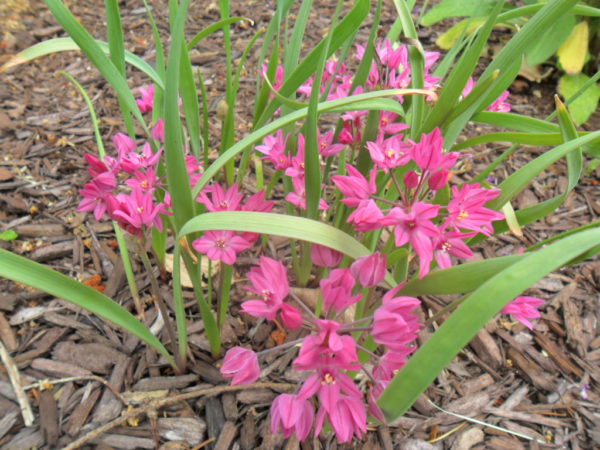
At this same time, the oxeye daisies and wild rocket are coming in, and close behind is the Siberian iris. These are all transplants from my parent’s old wildflower garden, which is now outside the fence and off my property, but last spring we pulled out what we could and brought it inside. Nothing fared so well that first year, but they’ve all come back like gangbusters this season, and I couldn’t be more pleased.

Rocket is that ubiquitous roadside weed, a Midwest native, that flowers so profusely in late May, sending tall sprays of small blossoms skyward; its hue varies from white to deep lavender, and I am fortunate to have a few of each in its color palette. A member of the mustard family, rocket isn’t reliably perennial, but self-sows readily, and typically reemerges where you last saw it, if not the same plant. Its racemes can become so elongated that they comprise up to half the plant height, and though its major blooms extend just a couple weeks, it can go on putting out smaller clusters, or even individual blossoms, at its tips for well over a month, providing small dots of color seemingly suspended in mid-air.
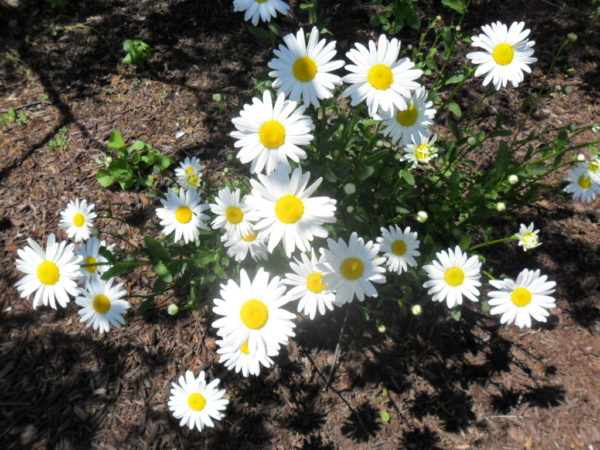
But when it blooms in tandem with oxeye daisy, the effect is stunning. Bright yellow centers ringed by snowy white petals, oxeye is a European native, brought to America by early settlers, and has since escaped into the wild. I brought home a small clump from the field behind the house when I was a boy, and its descendants now grace my fenced garden.
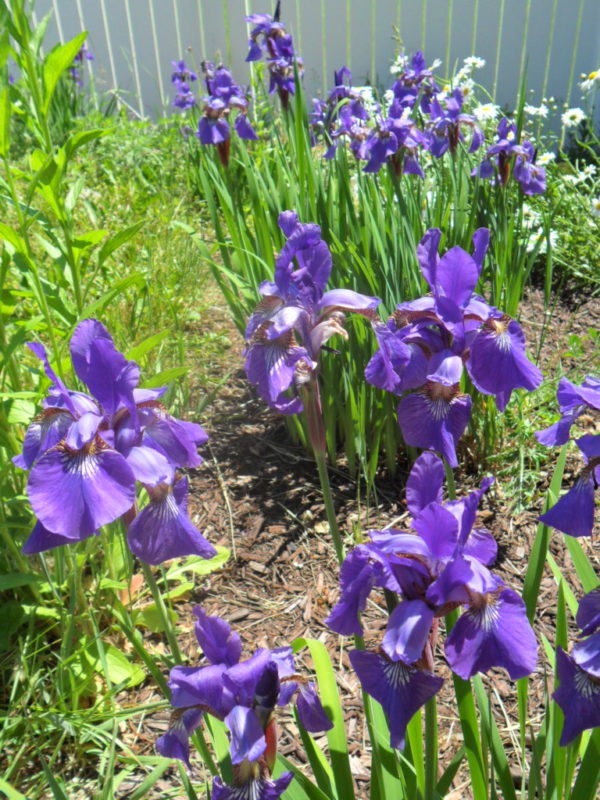
The third plant in our late May triumvirate is Siberian iris, a smaller-flowered variety with startling electric blue petals daubed with yellow-white striations. The iris were originally a gift from a friend, but I knew these sun-lovers would wither in my shady Philadelphia garden, so immediately passed them on to dad for the wildflower garden here. He planted them in file, but they quickly spread into a large patch, and a decade later, when we raided the old garden, I just told the crew to dig out what they could, split them into manageable chunks, and ring the back top of the sand mound with them. When they job was done, I had no less than 24 new clusters arcing east to west! These come in just after the rocket and oxeyes, and blooming together, create a wondrous display.
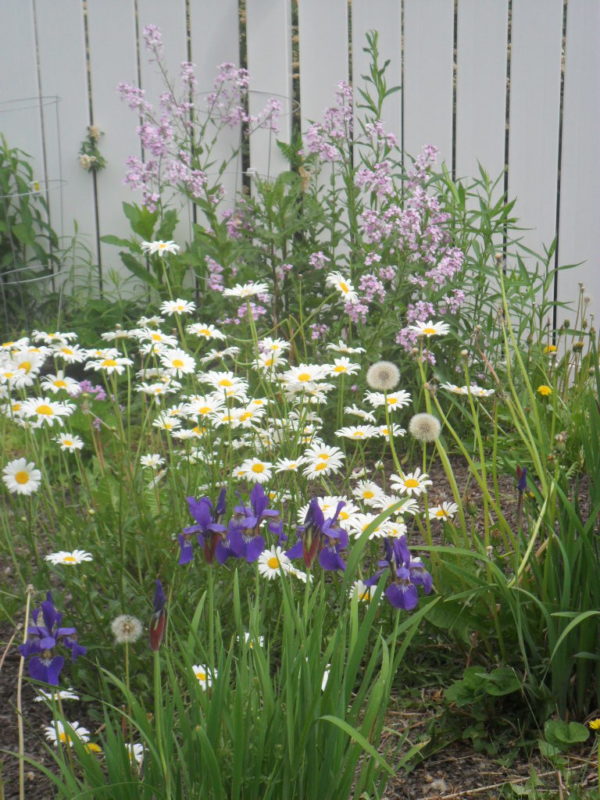
Technically, most Asiatic lilies would be the next to come to flower, but I have a wide range of daylilies also, and some of the early bloomers preceded the Asiatics this year. First to pop was the aptly-named “Buttered Popcorn”, now in its second year on the property. It opened its initial sunshine yellow bud on June first, and now, three weeks later, is still going strong. I counted more than two dozen buds on one multi-branched stem, with smaller stems coming along behind.

Another second-year, “Collier” started to bloom about ten days later, still very early for daylilies, which typically flower in July and early August. Collier has frilled petals in a pastel butterscotch tone, and though neither of mine bloomed last year, both have multiple stems this season. The rest of the established second-years show increased stem production, but it’s too early yet to tell if they’ll provide anything like the staggering amount of buds per stem which Buttered Popcorn did.
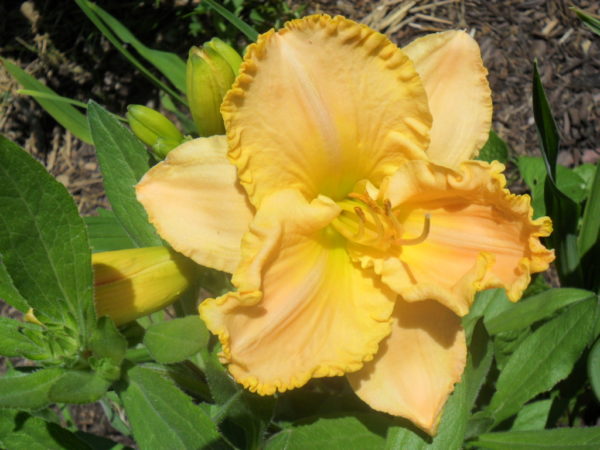
My first-years are all up and doing well, many have stems emerging, but of course they are much smaller overall than the second-years. One small-blossomed variety, “Siloam Jim Cooper”, has tiny buds that are starting to show their deep pink color, and should be opening within about a week.

As if to compensate for not being the very first lily to open, by mid-June “Forever Susan” has burst onto the scene in a riot of color and blossom. Deep orange trim with an almost-black midline splotch, this Asiatic lily reminds me of Halloween! Each sturdy stalk supports as many as twenty buds, and I have eight on the property, but a grouped planting of three is the true show-stopper. Now in its second year, what began as a single mature floral spike per bulb, perhaps four feet high, is now two or three mature spikes, with as many “baby” spikes emerging from the base, all with tiny buds! The advantage to Asiatics is that their individual blossoms last for much longer than a day, though they tend to bloom for a shorter overall period than do daylilies. But when the show’s in town, you don’t want to miss it!

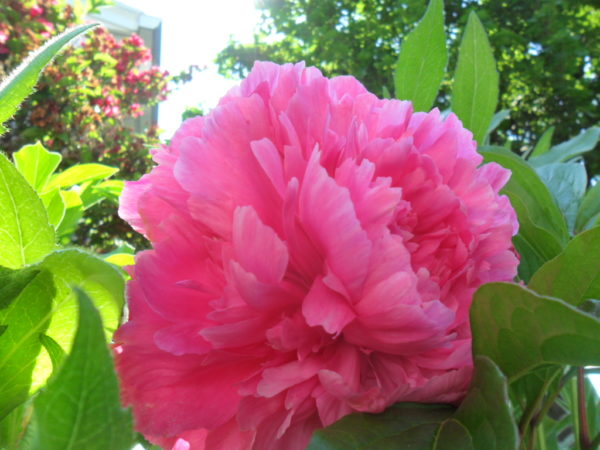
There is also a stand of orange Tiger lilies, mottled with maroon-brown spots, on the property, an inheritance from my parents, but these will be last to bloom among the Asiatics. Mid-season “Stargazer” is another introduction from last year, when it performed poorly, with only one of three plants offering bloom. This year all are budded, and I look forward to its white-trimmed pink flowers. “Pink Giant” is living up to its name, and this year towers over me with seven-foot stems. Both should start to bloom within a few weeks.
Peonies are also a staple of late May to early June; I have two varieties, white and pink, which are heirlooms from my parents. We moved them to a sunnier location last year from under the birch shade, where they hadn’t bloomed much for years. Transplant shock kept them from blooming at all in 2020, their forming buds shriveled and dried, but they’ve made a brave return showing and, though not profusely covered, each had several large fuzzy blossoms.
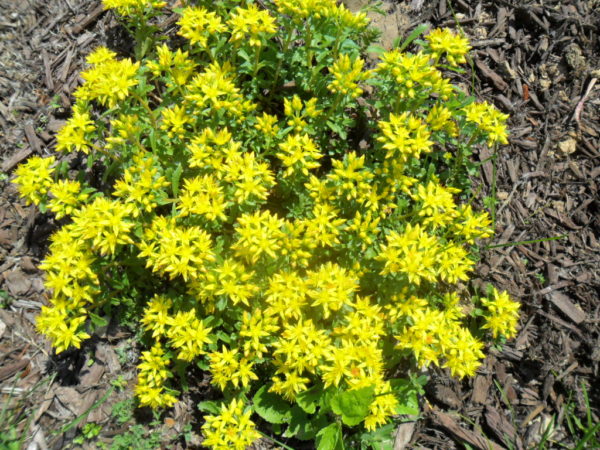
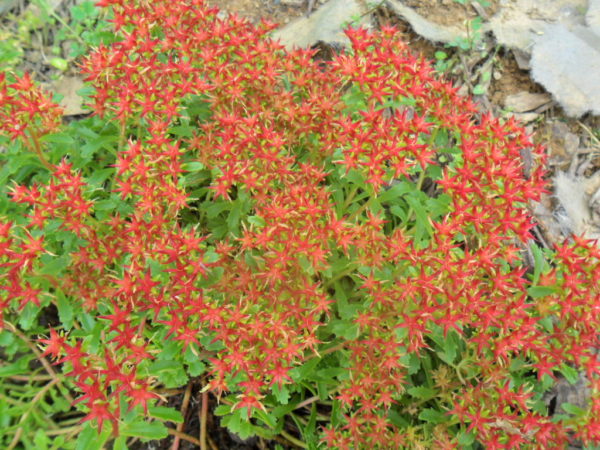
My spring-blooming sedum “Pot of Gold” groundcover didn’t flower in its first year either, but spread rapidly from its 3” pot into large low disks. This year they were mantled in small yellow blossoms for weeks, which turned a lovely red-orange as they faded, almost as attractive as the original color. Based on their performance, I’ve added four more varieties of similar groundcover sedums this year, but none have yet come to flower. I also added a pair of late summer, early autumn bloomers, erect sedums in a deep pink tone, after the success of the popular “Autumn Joy” strain last year.
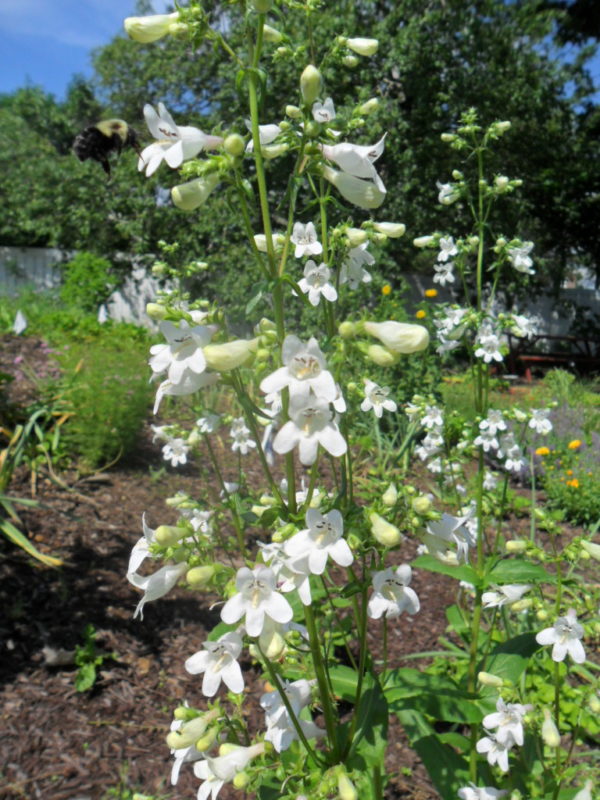
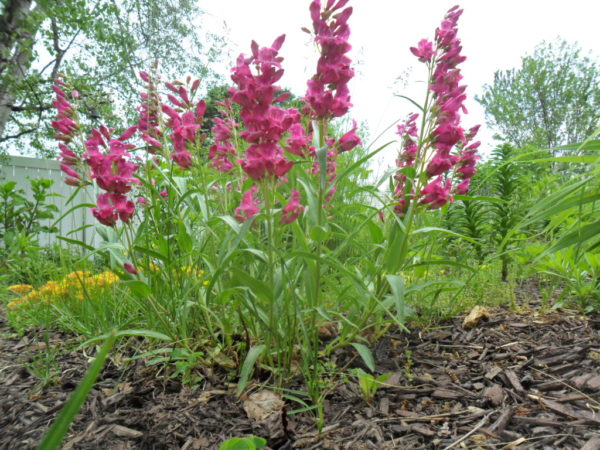

Another early bloomer is penstemon, commonly called “Beardtongue”. Sporting tall spikes of flowers with an almost snapdragon appearance, penstemon comes in a broad variety of colors. My father had a large planting of these in the wildflower garden, which over the years got crowded out by more aggressive neighbors such as echinacea and yarrow, but we managed to bring one plant inside the fence when we transplanted from there. Weak and sparse last year, this humble white penstemon has returned with vigor, and seeded itself in other areas of the garden as well. Last year I also acquired a deep pink version from a garden center, much shorter and with blossoms more closely clustered than its wild progenitor, and this year I bought another, more willowy version, with flowers of white and violet mixed.
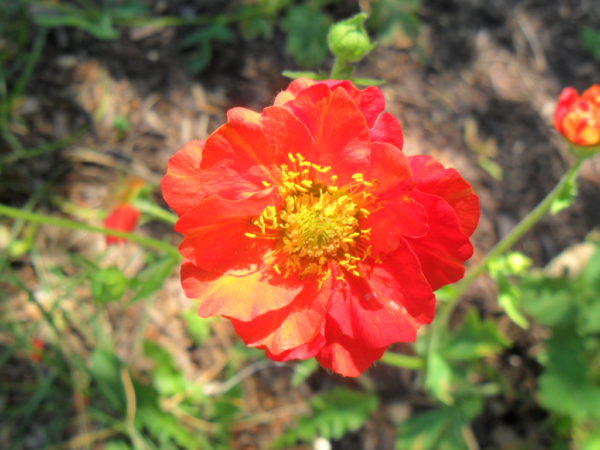

I’m also experimenting with geums this year. Bushy mounds of sculpted leaves shoot aerial spikes up to two feet long, sprinkled with “old rose”-style blossoms, small slightly overlapped petals around fuzzy yellow centers. Mine are in tangerine and red, but there’s a range of colors available. The flowers are random and widely spaced, but the delicate appearance only adds to their beauty.
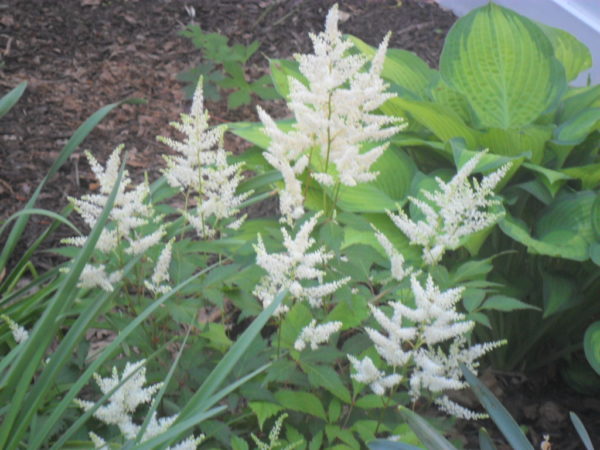
Astilbe is another old friend, more of a shrub than a flower. Delicate traceries of foliage on sturdy stems remain attractive all season, but die back to the ground every autumn. Their early June blooms comprise branching stems completely covered in miniature blossoms, giving a fuzzy appearance. Mine are a gift from a friend who was downsizing his garden, and are white, but colors vary through pinks and lavenders, though some of these don’t bloom as vigorously as the original.
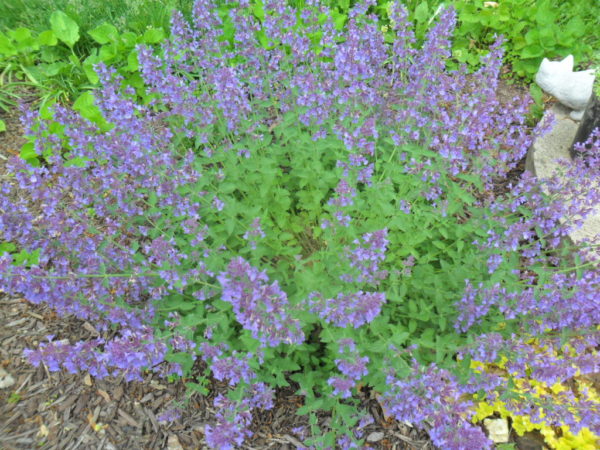
Among the new discoveries I can’t live without is catmint. Grey-green foliage bursts into spikes of small blue mint-like flowers blooming bottom-to-top, whorled all along the 12-inch stems. Not as attractive to felines as catnip, catmint is in the same family, and blooms endlessly throughout the growing season. Pollinators love it!
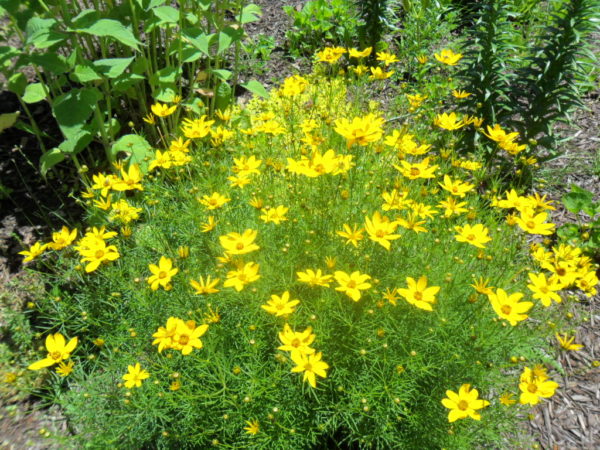
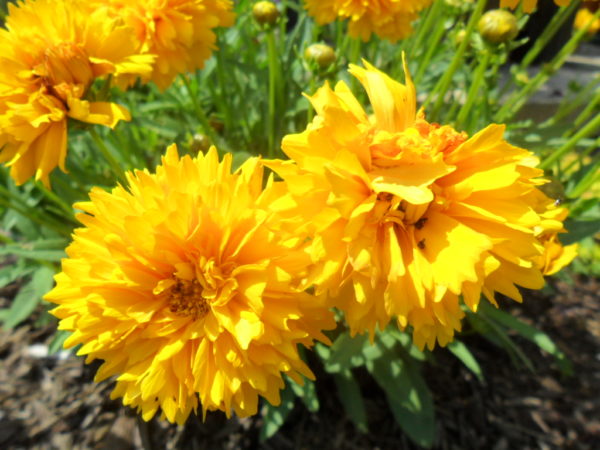
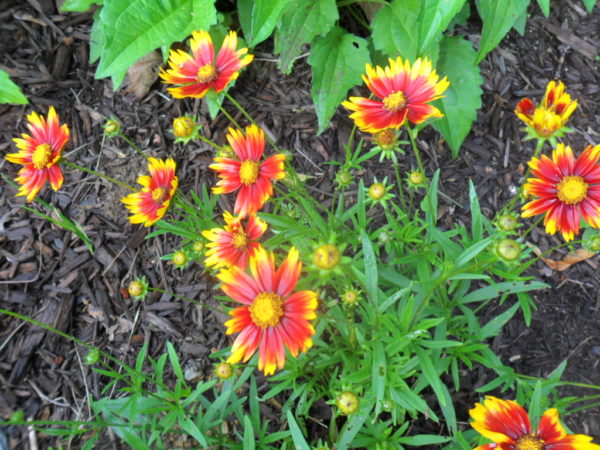
The vast array of offerings in the coreopsis/tickseed family can be overwhelming, and some of these will open as early as mid-June. Sun-loving and drought tolerant, they are especially well-suited to my clay and shale soil. Their foliage varies from ferny delicacy to more substantial heart-shaped lobes. “Moonbeam” is an old friend in palest yellow, while Zagreb sports an intense golden flower. Some wild varieties have infiltrated the garden as well, but their sunshine yellow blooms are more transient, whereas the cultivars and hybrids tend to rebloom in stages all summer long. My double coreopsis is especially prized, and I also enjoy a single-petaled variety, banded in burgundy-brick and yellow. This year I invested in “Lil’ Bang Red Elf”, a rich red-maroon, which has yet to bloom.
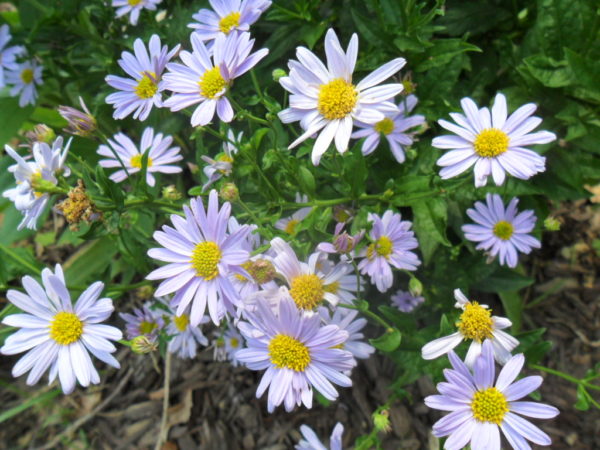
“Blue Daisy” is another outstanding performer, smothered in delicate pale blue blossoms from late spring to frost. Actually a member of the aster family, Blue Daisy provides a welcome cooling touch to all the hot summer yellows and oranges in my garden.
As the summer solstice arrives, heliopsis is turning its lovely bright yellow flowers sunward. One of my absolute favorite plants, these long-lived blossoms will not reach their peak until next month, when they vie with electric purple bee balm and flame orange daylilies as the queens of the garden.

And lest we forget about the shade garden, there’s my new blue geranium native, with foliage tinged red, a welcome addition to the hostas, heucheras, ferns and woodruff that largely populate the bed under the birch and maple. I’ve planted a row of mixed impatiens among the violet ramble, but they’re still too young to show much. The new May apples, Jack-in-the-pulpit, Virginia bluebells and trilliums are adapting to their transplant, and are holding their own, but won’t bloom this year. Bleeding hearts, white and pink, are past, but purple lamium is now at its peak, and violet toad lily is warming up for its August debut.
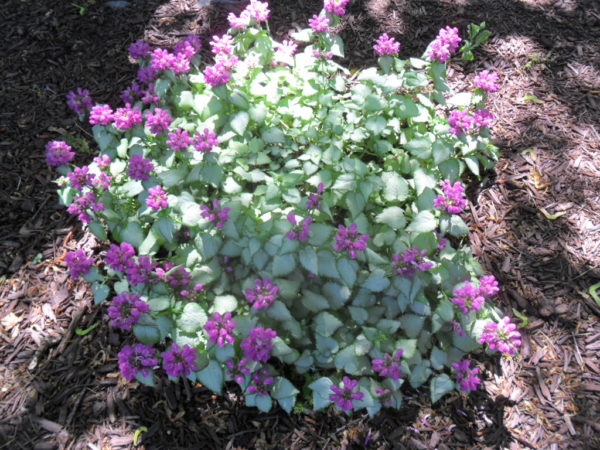
It’s all set to be a summer of color here in the garden, and it’s just beginning!
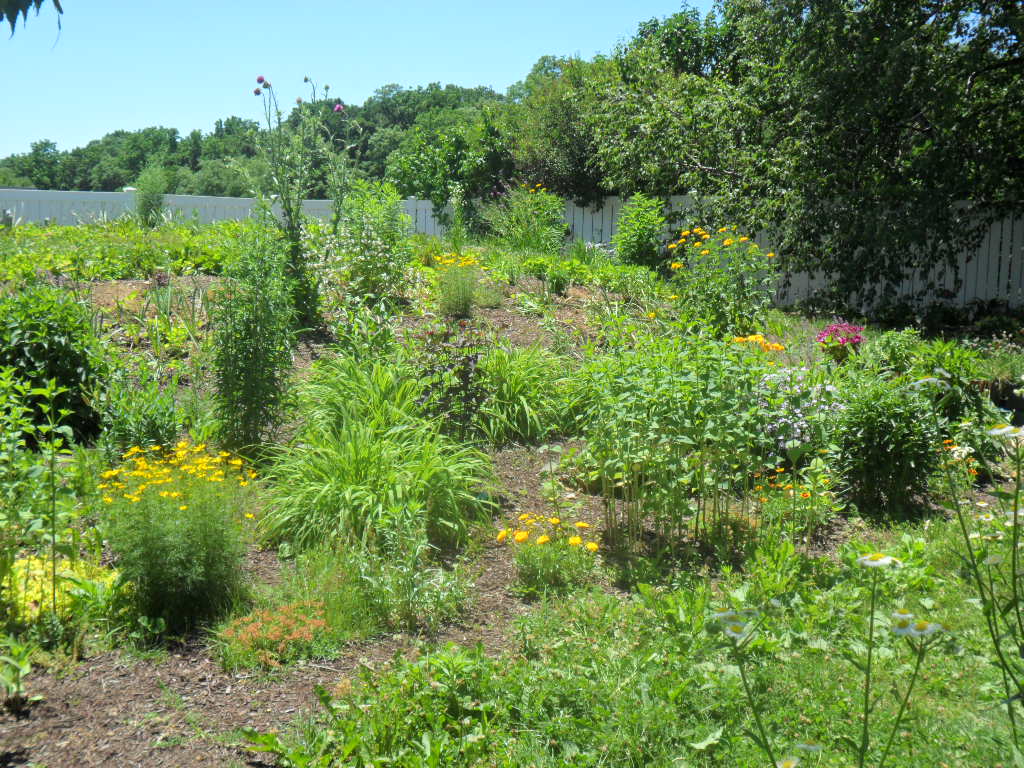

3 comments, add yours.
Laurien
Happy Summer to you too, Alex! Thank you for sharing photos of your beautiful garden! I especially loved the Collier day lily and the Forever Susan lilies. My garden also has day lilies, Asiatic lilies, and Siberian irises but doesn’t rival yours! Your catmint looks fabulous too and that’s a great tip that it’s drought resistant as so many places are suffering from hotter summers and climate change. It looks like you are making the bees happy so that’s a help! I hope in your next garden post that we get to see the 7-foot pink giants–I’ve never heard of such a thing! I’m glad you are enjoying your summer in the garden but hope you can eventually rest on your laurels and write some of your great asteroid analyses too! Thanks again for this!
Esperanza Acosta
Gracias por compartir su lindo jardín bien descrito en cada caso.
Jacqueline
Alex, Always love your garden shares! What a grand cacophony of color through the seasons. I was especially drawn to the “Dame’s Rockets” and the Oxeye Daisies as a remembrance of my Connecticut garden and June. Norm’s favorite flower is the Oxeye Daisy (although I think we had another name for it in CT) as it always was out for our June 6th Anniversary. I always tried to pick some for him on that date. This year we were in the Delaware Water Gap for our 55th Anniversary when I discovered the daisy along the roadside. Dame’s Rockets in the dark and light shades were always a welcome cut flower early in the season. Your share was a gift because it reminded me that I can find seeds of these two lovely flowers for my PA garden. I look forward to seeing your late summer garden too.